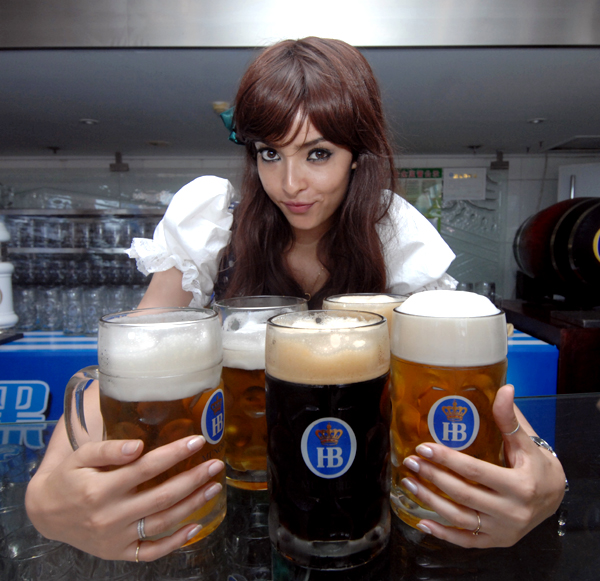
 |
|
High-end products are introduced at the annual Qingdao Beer Festival. [Photo to by Hai Feng/For China Daily] |
Chinese industry experts divide beer by taste into nongchun (strong) and danshuang (light). That technical categorization overlaps with, but is distinct from, such Western countries’ as the United States’ definitions of “light”. In China, it refers to taste, while in the West, “light” often technically measures a legally designated low-alcohol content and calorie tally.
That said, either cultural definition of light beer is more commonplace Stateside and in Asia, while stronger beers are European conventions.
But globalization is washing over both traditions. There are more heavy beers flowing into Asia and China, and more light beers are seeping into Europe.
Dobiezynski points out there are many Oktoberfest activities throughout China this year. German bands’ schedules are tightest this month.
"German beer is becoming more popular in China," he says. "Chinese people like to drink fruity, sweet beer with a lot of (flower) bulbs and ones that are not so bitter."
So he’s tinkering with an Indian pale ale to release next spring that he hopes Chinese customers enjoy.
More high-end products are emerging outside of China’s craft beer market. Some new arrivals are Tsingtao’s Augerta, Snow Beer’s super premium — adorned with a Peking opera facial mask — and Blue Ribbon’s 1844.
"Rising living standards have propelled these up-market creations," He says.
"And the industry faces overflow. They need new profit points."
China’s beer consumption engulfed Germany’s as the world’s No 2 in 1998 and surpassed the US’ top spot in 2002.
In 2012, China’s production and sales reached 49 million kiloliters, or 490 million hectoliters. That’s double the US’ 23 million kl, or 230 million hl.
China imports 1.1 million hl of beer yearly — about 0.001 percent of its domestic production. Its production and sales account for 74.6 percent of booze — five times the amount of the traditional white liquor (baijiu) consumption.
Growth has sustained 23 years. There are 146 enterprises with 411 factories.
Some say archaeological evidence indicates China produced a beer-type alcoholic drink about 9,000 years ago.
He Yong says white liquor’s record is more detailed although discoveries seem to indicate both were invented around the same time. "If the accounts are true, what they drank must be very different from modern beer," he says.
Contemporary beer’s more-distilled recipe is believed to have been discovered 3,700 years ago in Babylon.
The soul of this type of brewing was given new life in 1079 AD, when the Germans used hops in brewing. Yeast and filtering technology was advanced in France and Denmark in the mid-19th century.
Most global brands have by now invested in China.
The country’s top five respective names are Snow, Tsingtao, ABInBev (Budweiser), Yanjing and Carlsberg. He Yong says these five occupy 72 percent of the sector. He expects their high market share to soon rise to 85 percent.
"Big groups will seize most of the industry," he believes. "Mid-sized enterprises will decline. But small manufacturers, such as craft beer-makers and microbreweries, will grow."
That, he believes, is the culturally concocted recipe of China’s future beer market.